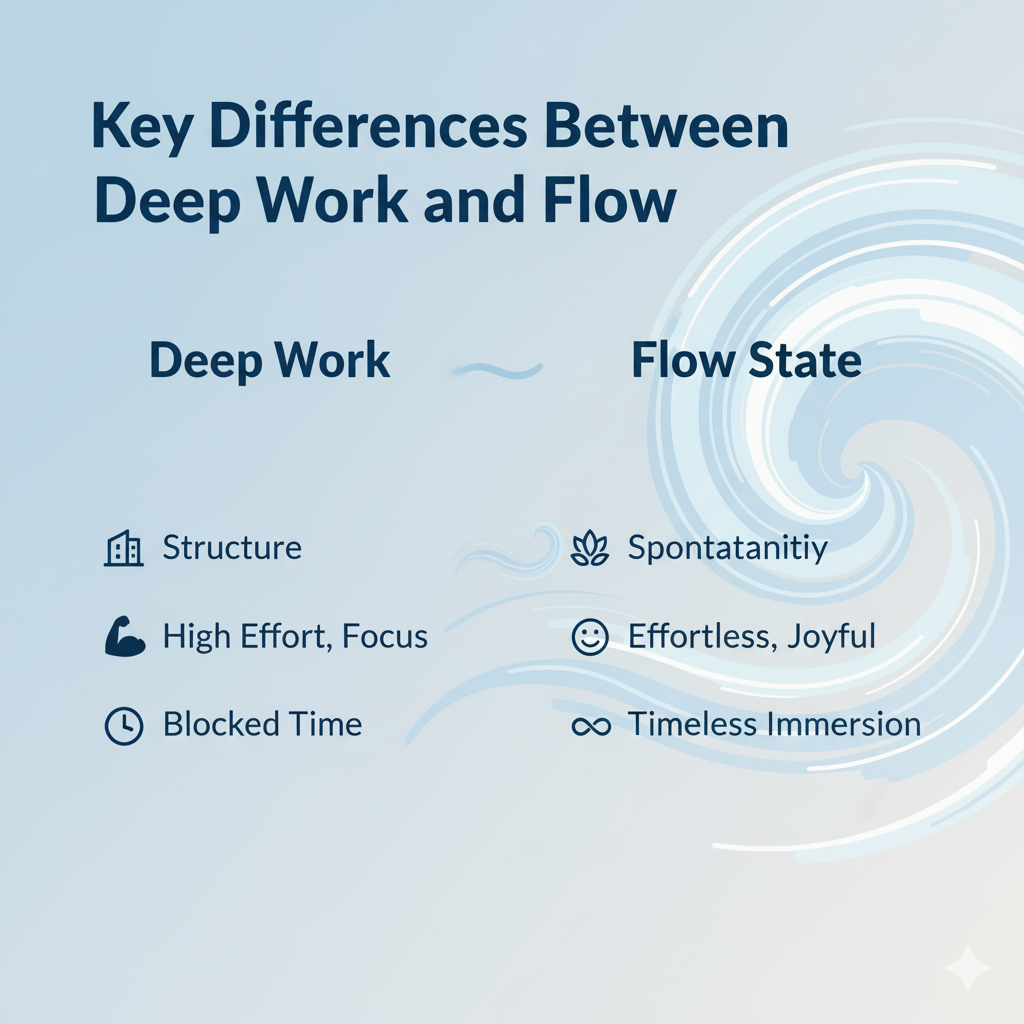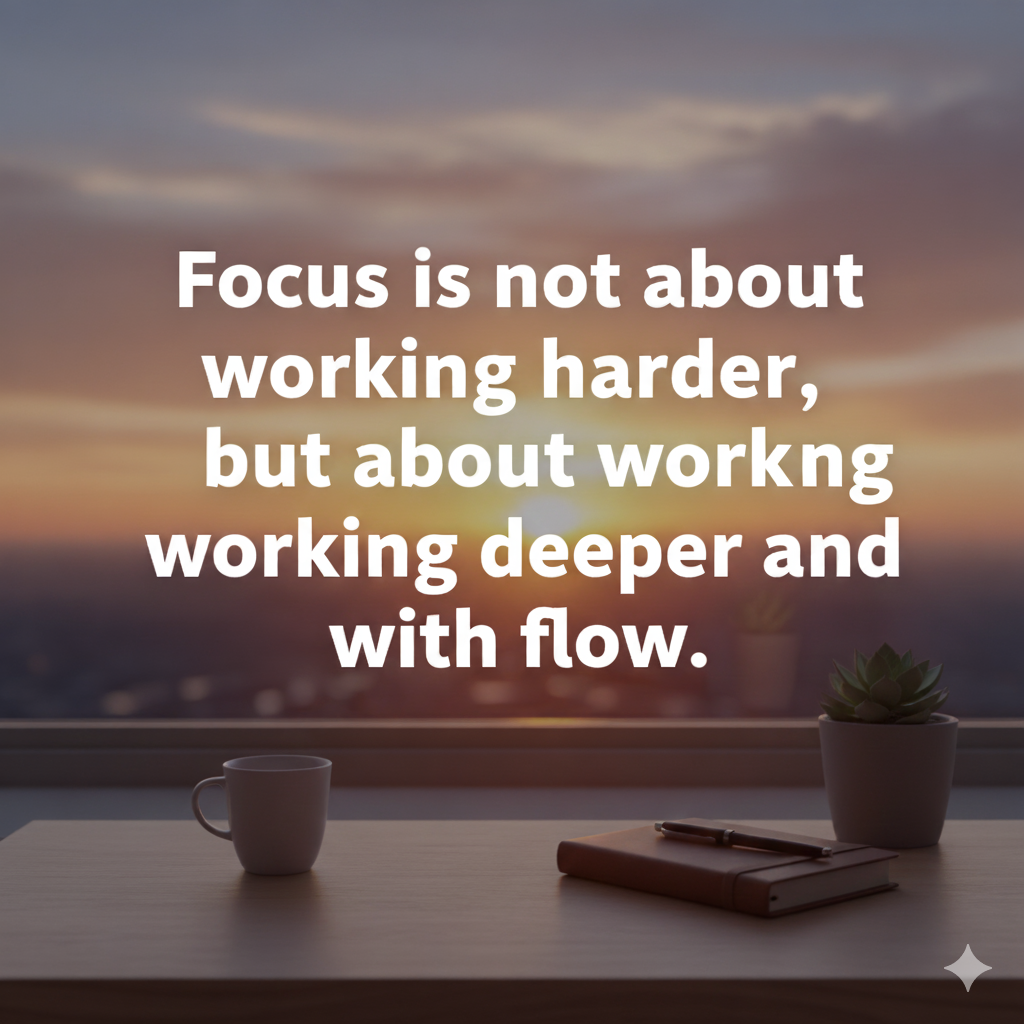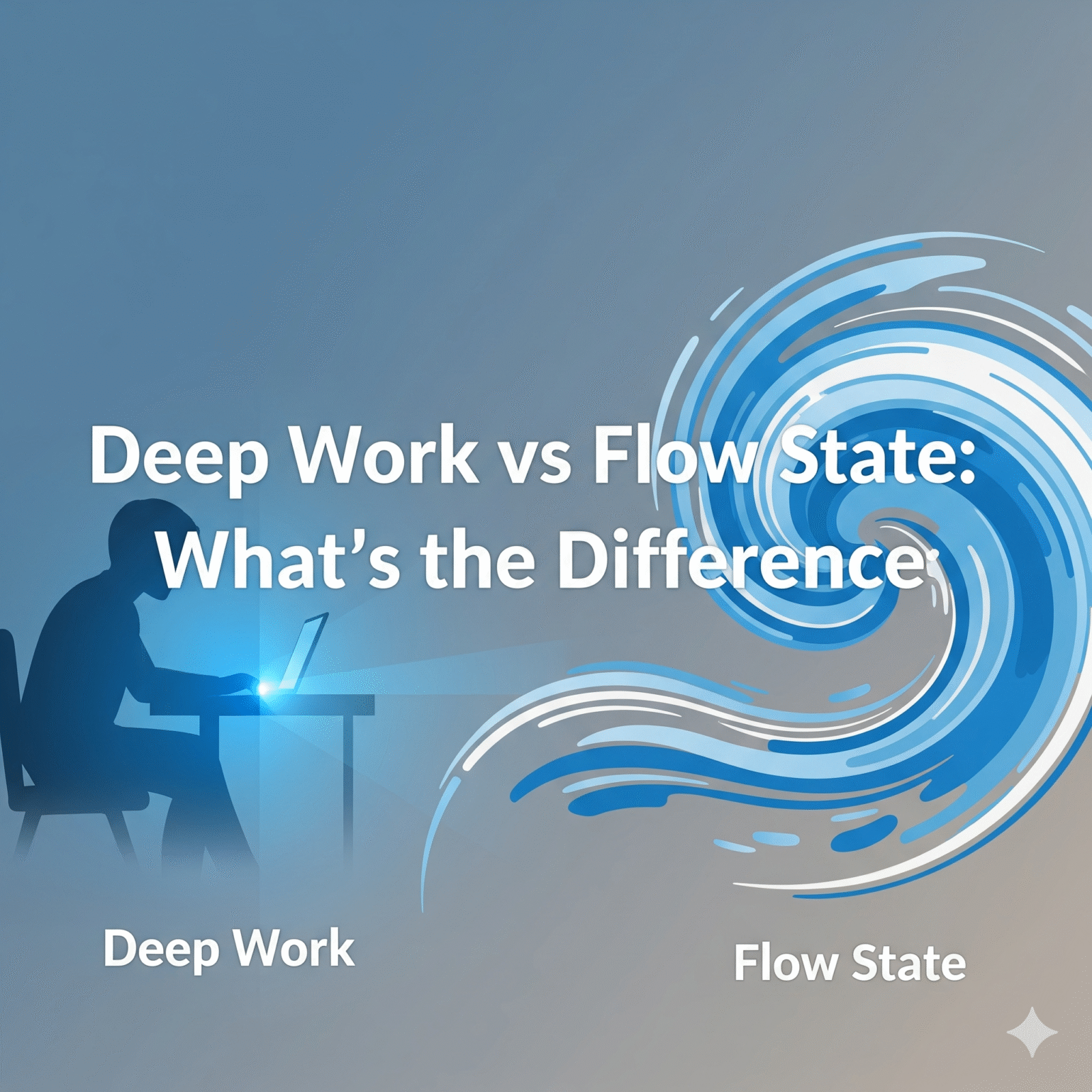Deep Work vs Flow State: Finding Your Path to Meaningful Focus
Ever sit down at your desk with the best intentions, only to realize an hour later you’ve been “researching” things you didn’t need to know? Or maybe you’ve had those rare golden hours where time disappears, your mind feels clear, and the work almost does itself.
Those two experiences—one of distraction, the other of deep focus—capture the tension between how most of us work and how we wish we could work.
That’s where the concepts of deep work and flow state come in. Both describe powerful modes of focus, but they’re not quite the same thing. Understanding the difference—and how to invite more of each into your life—can help you work smarter, create more meaningful output, and even enjoy the process along the way.
In this article, we’ll explore what deep work and flow state really mean, how they overlap, how they differ, and most importantly, how you can use both to build a more purposeful rhythm in your days.
What Is Deep Work?

The term deep work comes from author Cal Newport, who defines it as the ability to focus without distraction on a cognitively demanding task.
Think of deep work as your brain’s version of strength training. It’s not flashy. It’s not necessarily fun. But it builds the muscle of attention and produces results you can’t get with shallow multitasking.
Key features of deep work:
- Intentional effort: You decide in advance to focus.
- Distraction-free: Phone off, inbox closed, no “just checking” social feeds.
- Cognitive challenge: The task stretches your mind—writing, coding, problem-solving.
- Lasting impact: The outcome adds value or moves a project forward.
I like to think of deep work as a quiet contract you make with yourself. You choose to put your full mind into one thing—and in doing so, you give yourself the rare gift of progress without noise.
What Is Flow State?

Flow state, a concept introduced by psychologist Mihaly Csikszentmihalyi, is often called being “in the zone.” It’s that experience of total immersion where you lose track of time, and the work feels almost effortless.
Unlike deep work, flow isn’t about discipline—it’s about absorption. You don’t push yourself into flow; you slide into it when the conditions are right.
Signs you’re in flow:
- Time feels distorted—hours can pass like minutes.
- The task feels challenging but not overwhelming.
- You’re so engaged that distractions fade into the background.
- The process feels rewarding in itself.
If deep work is a deliberate choice, flow state feels more like a gift. You can’t guarantee it, but you can create the right environment for it to appear.
Deep Work vs Flow State: The Key Differences

So, how do deep work and flow compare? At first glance, they look similar—both involve focus and reduced distraction. But the mindset, triggers, and outcomes have important distinctions.
1. Structure vs Spontaneity
- Deep work requires intentional structure. You decide when, where, and how you’ll focus.
- Flow tends to happen more organically, often when you’re fully absorbed in something challenging but enjoyable.
2. Discipline vs Ease
- Deep work can feel effortful at first—you’re resisting distraction.
- Flow feels almost effortless once you’re in it, even though the task may be demanding.
3. Output vs Experience
- Deep work is primarily about producing results.
- Flow is about enjoying the process while producing.
4. Control vs Emergence
- With deep work, you control the conditions.
- With flow, you can only encourage the conditions—it emerges when challenge and skill meet.
Key takeaway: Deep work is a discipline you practice. Flow state is an experience you enter. Both serve different roles, and both can support your goals.
Why You Need Both
Here’s the beautiful part: deep work and flow are not rivals. They complement each other.
- Deep work builds the habit of focus so that flow has a chance to emerge.
- Flow makes deep work enjoyable, so you’re more likely to return to it.
Imagine writing a book. The discipline of deep work gets you to sit down every day and write, even when inspiration is absent. Flow is what happens on those magical days when the words pour out, and you forget to check the clock.
Without deep work, flow may never show up. Without flow, deep work can feel like drudgery. Together, they create a rhythm that balances discipline and joy.
How to Practice Deep Work
Deep work requires intentional design. Here’s how to create a practice that works in real life:
1. Schedule Focus Blocks
Protect 90–120 minute windows in your calendar. Treat them like appointments with yourself.
2. Remove Distractions
Silence notifications, use site blockers, or physically remove your phone. The fewer temptations, the better.
3. Define Success Before You Start
Know what “done” looks like for your session. A page drafted? A bug fixed? A concept clarified?
4. Embrace Boredom Between Sessions
Resist filling every spare moment with scrolling. Downtime strengthens your ability to focus later.
Pro tip: I use Forest (affiliate) to gamify focus sessions. It locks me out of distracting apps while I “grow” a virtual tree. Simple, but surprisingly motivating.
How to Invite Flow State

Flow is less about rigid rules and more about cultivating conditions. Here’s how to increase your chances of entering it:
1. Match Challenge to Skill
Pick tasks that stretch you slightly beyond comfort—but not so far that you feel anxious.
2. Create Rituals That Prime You
Light a candle, play instrumental music, or work in a familiar spot. Rituals act as mental “on switches.”
3. Remove Time Pressure
Flow thrives when you’re not glancing at the clock every five minutes. If possible, set aside open-ended blocks.
4. Focus on Intrinsic Rewards
Choose tasks you want to do, not just those you have to do. Enjoyment invites immersion.
Personally, I notice flow appears most often when I’m writing about topics that genuinely fascinate me. The curiosity itself becomes the fuel.
When to Use Deep Work vs Flow State
Knowing when to lean on deep work or invite flow can save you frustration.
- Use deep work when:
- You must make progress on an important but unexciting task.
- Deadlines matter.
- Distractions threaten to derail you.
- Use flow when:
- Creativity or innovation is needed.
- The task has no strict time limit.
- You want to connect with joy in the process.
Think of it this way: Deep work is your discipline. Flow is your reward.
Common Myths About Deep Work and Flow
Let’s clear up a few misunderstandings:
- Myth: Flow state is always possible.
Reality: Flow can’t be forced. Some days, focus will feel like work—and that’s okay. - Myth: Deep work requires monk-like isolation.
Reality: Even one protected hour counts. Consistency matters more than extremism. - Myth: Flow is only for creatives.
Reality: Coders, athletes, teachers, even surgeons experience flow. It’s universal. - Myth: You must choose one approach.
Reality: Deep work and flow are complementary tools, not competing philosophies.
Tools & Resources That Help
You don’t need fancy systems, but the right tools can make focus easier:
- Time-blocking apps like Sunsama or Motion (affiliate) for scheduling deep work.
- Focus timers like Pomofocus for breaking work into manageable sprints.
- Noise apps like Brain.fm (affiliate) for soundscapes that encourage flow.
- Books: Deep Work by Cal Newport and Flow by Mihaly Csikszentmihalyi—both classics worth having on your shelf.
These aren’t magic bullets, but they create conditions that tilt the odds in your favor.
Reflection: Building a Rhythm of Focus

Ask yourself: When do I feel most alive in my work—when I’ve pushed through distraction, or when I’ve lost myself in flow?
Chances are, it’s both. Productivity isn’t about living in one mode constantly. It’s about recognizing when discipline is needed, and when joy can carry you further than grit.
Conclusion
Deep work and flow state are two sides of the same coin. One is about deliberate effort; the other is about effortless immersion. Both matter. Both can transform not just how much you produce, but how deeply you experience your work.
The real magic happens when you allow them to support each other. Deep work creates the foundation. Flow brings the reward. Together, they turn focus from a struggle into a rhythm.
So, what’s your next step? Try scheduling one deep work block this week. Create the conditions. Notice what happens. And if you’d like a gentle companion to support your focus journey, I recommend Deep Work (affiliate link)—a book that continues to shape how I approach my own days.
Remember this: meaningful work isn’t just about output. It’s about creating space for attention, creativity, and fulfillment to meet.





